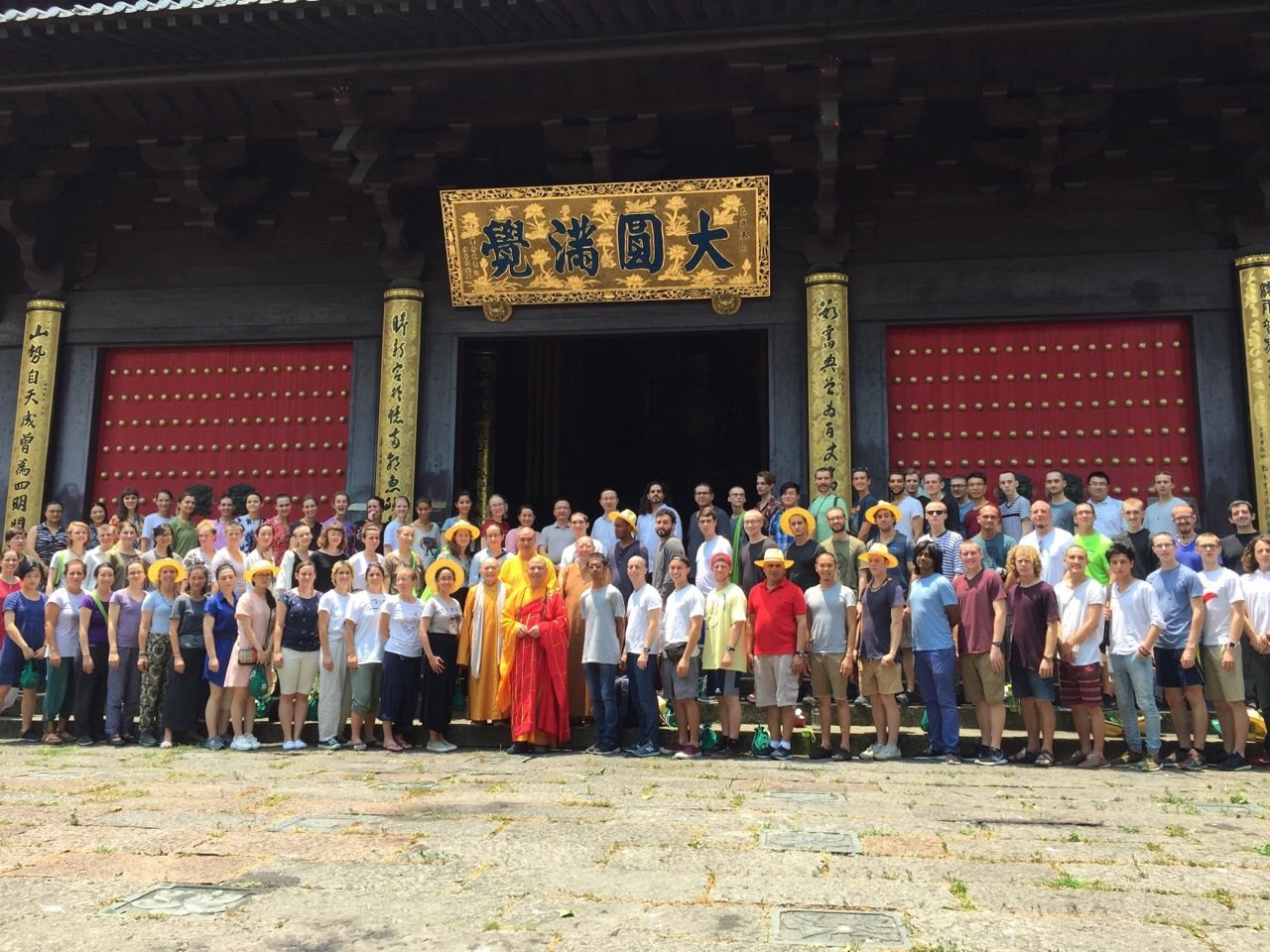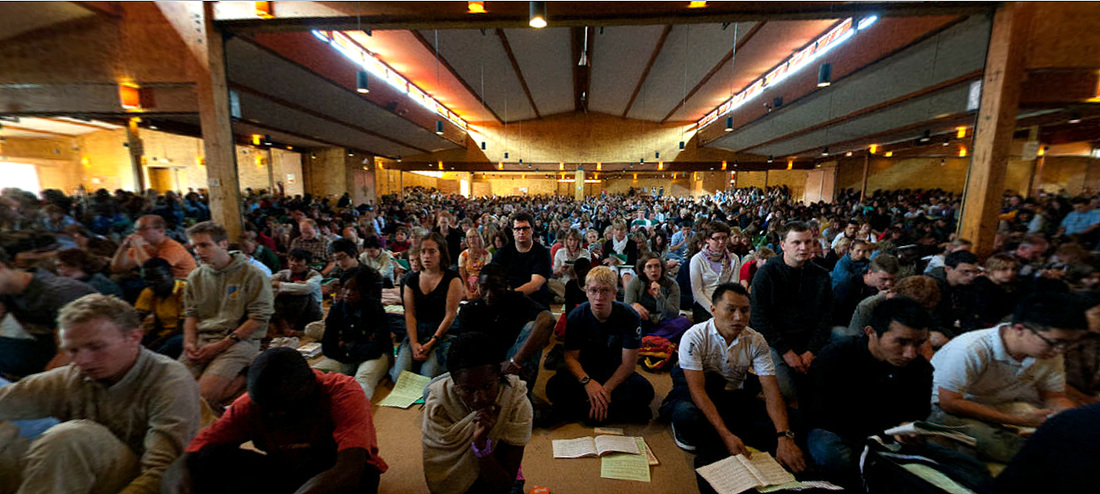Summer Learning Opportunities
As a student of Religious Studies, you know that often it is the questions that matter most, not so much the answers. What burning questions do you have, and how could a grant from one of Skidmore’s many funding opportunities help you find the answers? Click on the links below to find out about grants to support unpaid internships, launch an intellectual adventure, or to conduct research one-on-one with a professor.
https://www.skidmore.edu/osaa/fsg/see-beyond/index.php
https://www.skidmore.edu/osaa/internships/index.php#
https://www.skidmore.edu/sga/fundingopportunities/funding.php
https://www.skidmore.edu/fdc/faculty_student_summer_research/
Beyond the Classroom: Five Questions with a Major

Students and teachers who took part in the Woodenfish Foundation’s 2017 Humanistic Buddhism Monastic Life Program at Xinyin Temple near Ningbo, Zhejiang province, China/ photo courtesy of Clara Jones, '18.
Clara Jones, ’18: Woodenfish Foundation’s Humanistic Buddhism Monastic Program, China
- Tell us a bit about the Woodenfish Foundation program that you attended. What is Woodefnish and what activities did you participate in there?
Clara: Woodenfish is a foundation that provides the opportunity for students to learn through experience. Woodenfish encourages learning about Buddhism through engaging with the Chinese Buddhist community. This meant that for a month I had the opportunity to live at a Chinese Buddhist Monastery alongside the monks and nuns, amazing professors, and students from all around the world (70 students from 28 different countries!). The days were long and rigorous, beginning around five in the morning. Besides traditional Chinese Monastic meals, the days consisted of around five hours of classes about Buddhist Philosophy with three professors who themselves had participated in the program when they were students. The classes were really enriching, and in fact for an extra fee you can receive three college credits for participating in the program. We had time during the day to hand wash and dry our laundry, then we would spend two hours learning about Chinese culture (tai chi, tea, and art) and then learning about Buddhist philosophy from a lecture given by a monk. We also spent an hour a day meditating, since that is such an essential component of Buddhist practice. [click here to read more]
Lauren Berry-Kagan, ’18: The International Rescue Committee internship program
- Tell us a bit about the International Rescue Committee. What is it and what activities
did you participate in there?
Lauren: The International Rescue Committee is a non-profit organization that provides humanitarian aid to people affected by conflict and natural disaster. The organization was started during World War II, at the request of Albert Einstein, and now works in 34 countries and 27 cities in the United States. Its American offices help resettle refugees by providing cultural orientations, job trainings and placements, housing assistance, English education, after-school programs, and so, so much more.
During the summers of 2016 and 2017 I taught in IRC Seattle's Newcomer Summer School, which is for refugee youth ages 5-18 (I worked in the older class with students ages 11-18) who have arrived in the United States within the past year. Our students come from Iraq, Nepal, Syria, Somalia, Afghanistan, Burma, and Congo, and some had only been in the United States for a few weeks. [click here to read more] The main focus of the summer school is English, but we also did math, science, and school readiness activities to help students learn how to do things like check grades online, request an interpreter from the school for their parents, or join extracurricular activities. [click here to read more]
Ben Ginsburg ’18: The Museum of Man, San Diego, exhibits internship
- Tell us a bit about your internship at the Museum of Man in San Diego. What is the
museum’s focus, and what activities did you participate in as an intern?
Ben: In the summer of 2017, I was the exhibits intern with two projects that culminated in a presentation given to key players at the medium-sized anthropology museum. As an anthropology museum, they define their role in society as an institution that "collects, preserves, interprets, and communicates evidence of human development and creativity" so that they can "advance understanding and respect for all cultures" (musemofman.org). My two projects, which were assigned based on the museum's need to evaluate their in-house exhibits, involved conducting timing and tracking, as well as creating a survey that I administered. Finally, I had to analysis the data I collected before putting together a sixteen-page report that I presented to several departments. [click here to read more]
SEE-Beyond project. Rebecca Morofsky '15 conducted ethnographic research at an ecumenical Christian monastery in Taize, France, where 100,000 young adult go on pilgrimage every year.

A service of prayer, silence, and song attended by young adult pilgrims in the Church
of the Resurrection at the ecumenical monastery of Taizé (Photo courtesy of Rebecca Morofsky '15)